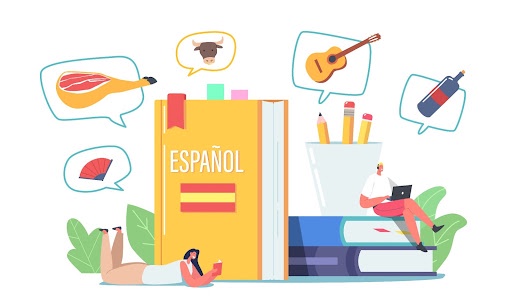Are you looking for ways to help your child learn to read in Spanish? As a parent, you can play an important role in teaching your child how to read. By providing opportunities for your child to practice reading and using simple techniques, you can help them develop the skills they need to become successful readers in Spanish. Check out this guide for parents on how to teach kids to read in Spanish!
-
Start with the basics: the alphabet and simple words
When teaching your child to read in Spanish, it is important to start with the basics. Begin by introducing them to the alphabet and simple words. You can do this by providing books and activities that focus on the alphabet and basic vocabulary. This will help build their foundation for reading in Spanish and give them a better understanding of what they are reading.
-
Make it fun
Engaging kids in learning doesn’t have to mean long lectures and tedious textbooks. Instead, why not make it fun? By introducing games, puzzles, language learning with dance, and other activities into lessons, students can stay interested in the material and deepen their understanding along the way.
With a little creativity and the right resources, you can turn topics like math or history into a world of exploration that everyone can enjoy. Not only will children be guaranteed to pay attention during class time, but they’ll have plenty of chances to use their problem-solving skills and boost their critical thinking skills while they’re at it – all while having a blast!
-
Use everyday opportunities to teach new words and concepts
Teaching children is a rewarding experience, and everyday opportunities allow parents, teachers, and others to enrich this process. From family dinners to grocery shopping trips, there are countless ways to explore new words and concepts naturally.
By just mentioning an obscure word during the day, you can help children understand its meaning in the context of their lives. You could also ask your child questions related to the topic or subject they’re learning in school. Through thought-provoking conversations, you can encourage kids to explore new words and have fun trying out new ideas! Everyday opportunities provide amazing experiences for both children and adults so keep your eyes open for any chances you have to be learning together!
-
Be patient
Learning a new language can be exciting for children, but it takes patience, big or small! Every child is different, so what works for one may not work equally well for the next.
Learning any new language will take time and while big books in Spanish may help jump-start the process, perseverance, and practice are the main keys to success. Most importantly keep it fun; use games, stories, and activities to further their understanding while they become more comfortable with the new language.
-
Reward progress
Watching your child experience something new can be an incredibly rewarding experience, so praising and celebrating progress should never be overlooked. This doesn’t have to be anything big – a big hug, a special treat, or even just singing their praises with a cheerful voice – it all helps to reinforce and encourage that learning experience.
Books can also be helpful for this purpose; for example, when your child reaches milestones with big books in Spanish, you could go to the library together and pick out their favorite book as a reward for their hard work. By rewarding progress and taking the time to appreciate every little step your child makes along the way, we can show our children how much we value both their hard work and achievements.
Teaching a child a new language can be a rewarding experience for both you and your child. By starting with the basics and making it fun, you can help your child learn a new language while also bonding with them. Be patient and reward your child’s progress to encourage them to keep learning. With a little time and effort, you can help your child become bilingual or even multilingual!
Originally Published At: https://www.bbbg.org/sb/teaching-your-child-read-spanish/


No comments yet